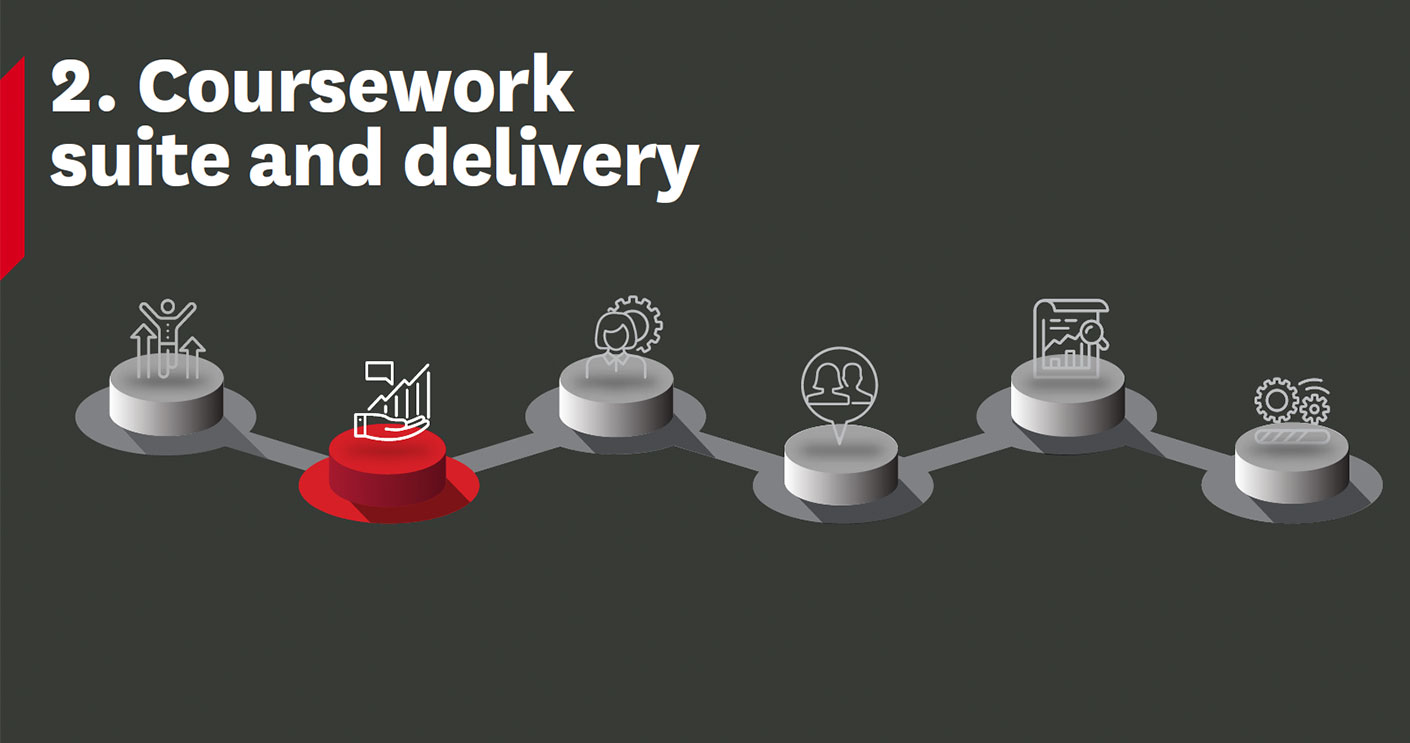Pro Vice-Chancellor (Program and Pathways) Professor Sean Brawley talks about the current work being undertaken through the Quality Assurance, Enhancement and Improvement (QAE&I) workstream of our 2020-2024 Operating Plan’s Coursework Suite and Delivery Program Board.
The first in a series of articles for This Week, Sean provides sector and institutional context to the work currently being undertaken. This important work is a core responsibility of our status as a public university with self-accrediting status, and ensures that through the stages of a newly conceived Curriculum Lifecycle, our coursework suite is subjected to rigorous quality assurance processes.
 As a public university with self-accrediting authority over our coursework suite, a crucial dimension of our activities relates to the assurance of the quality of our courses through robust processes of accreditation, monitoring and reaccreditation. This is one of the keys to ensuring our students have an excellent learning experience during their time studying with us.
As a public university with self-accrediting authority over our coursework suite, a crucial dimension of our activities relates to the assurance of the quality of our courses through robust processes of accreditation, monitoring and reaccreditation. This is one of the keys to ensuring our students have an excellent learning experience during their time studying with us.
Our approach to the approval, monitoring and periodic review of our course suite is a matter for us within the boundaries of expectation set by the Higher Education Standards Framework (HESF) and other regulatory instruments. Quality Assurance Enhancement and Improvement (QAE&I) therefore informs all stages within the lifecycle of a curriculum.
For me, QAE&I can be summarised as having the right policies and processes in place to to gauge the quality of our coursework suite. This is Assurance. If we find through this activity that a course or its components are not meeting our expectations for quality we then subject them to processes aimed at addressing the identified concern. This is Enhancement. Our efforts in assuring and enhancing our coursework suite its conducted through the operation of a quality system. Our Quality System operationalises the processes through which we do this work and we continually monitor this system to ensure it is fit-for-purpose. This is Improvement.
To support the refresh of our existing QAE&I processes we are undertaking improvements to our Curriculum Management System to help deliver our processes. This work is further enhanced by a new Curriculum Lifecycle Framework (CLF) and enhancements to our CMS systems.
Our new Curriculum Lifecycle Framework (CLF) charts the journey of an award course, course component or unit from idea to disestablishment. It can also be applied to non-award educational products that still require institutional oversight such as short courses which embed our new institutional approach to microcredentials.

Stage 1: Ideation
This is where the idea for a new course is first considered. This stage is driven by strategic and business considerations. It will incorporate a new decision-making process.
Stage 2: Accreditation
This is the stage where the design of a new academic item is undertaken and the academic case for accreditation is made. It incorporates our existing academic governance processes.
Stage 3: Delivery
This is where the magic happens!
Stage 4: Monitoring
Where we monitor the performance of our academic items — from units, through course components, to the course. Our approach to unit monitoring takes place at the conclusion of a study period with courses health checked on an annual basis. The approach is data-driven and risk-based. If a risk is identified a plan is then put in place to address the issue within the current cycle. If the issue is high risk it can trigger a full re-accreditation review.
Stage 5: Re-accreditation
The HESF requires that at least once in every 5-7 years a course is subjected to rigorous external review to ensure it continues to meet the standards expected of it. Such a processes requires significant stakeholder engagement and external referencing against sector benchmarks. Our approach is being designed to support both our own internal reaccreditation needs and the external accreditation requirements of many of our courses.
Stage 6: Discontinuation
The results of Stage 5 can see one of three next steps. First the course could be deemed to meeting our expectations and returns to Stage 3. Given monitoring serves to deliver continuous improvement such an outcome may not be as infrequent as in the past. Second, the course could return to Stage 2 for revisions that require the approval of our academic governance processes. Third, the decision of Stage 5 may be that the course will be discontinued.
At this time there is no work related to the new processes that is required by academic and professional staff not already engaged with the project work through Operating Plan, Program Board 2, Workstream 5.
In my next This Week feature I’ll talk about the draft policies, procedures and the timetable for finalisation before setting out our institutional timetable for implementation. Watch this space!


 Back to homepage
Back to homepage
Comments
We encourage active and constructive debate through our comments section, but please remain respectful. Your first and last name will be published alongside your comment.
Comments will not be pre-moderated but any comments deemed to be offensive, obscene, intimidating, discriminatory or defamatory will be removed and further action may be taken where such conduct breaches University policy or standards. Please keep in mind that This Week is a public site and comments should not contain information that is confidential or commercial in confidence.